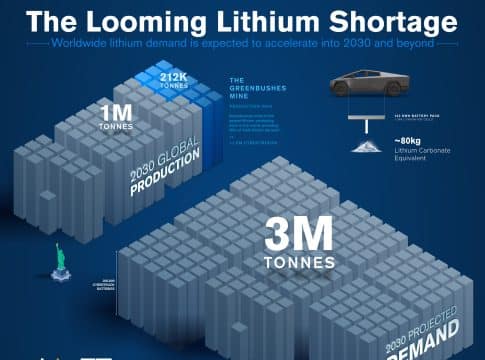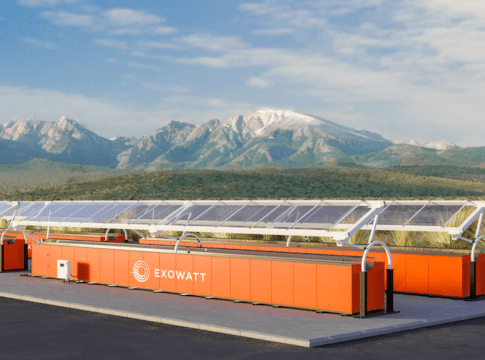Lithium Shortage Looms: Meeting the Surge in Demand by 2030
The Looming Lithium Shortage
Lithium, often referred to as the “white gold” of the clean energy transition, is a crucial element in battery storage technology. Its significance stems from its role in powering electric vehicles (EVs) and storing renewable energy from wind and solar sources.
Demand for lithium has surged dramatically and that’s all thanks to the rise of EVs and renewable energy storage. Now, take a look at the graphic. It shows the huge gap between lithium demand and supply by the decade’s end.
In 2021, the world consumed around 500,000 tonnes of lithium, a figure that is expected to reach over 3 million tonnes by 2030. This rapid growth is primarily due to the escalating need for lithium-ion (Li-ion) batteries, which are at the heart of the electrification trend.
Today, nearly 60% of lithium is mined for battery applications, a figure projected to jump to 95% by 2030. This growth is closely tied to the increasing demand for EVs (about 4,300 GWh), which could account for up to 90% of passenger car sales in certain countries by the end of the decade.
Meeting this need may strain the current lithium supply chain. Even lithium prices have recently been making headlines.
Lithium Supply: Can It Keep Up?
Take for example the case of Tesla’s Cybertruck 123 KWh battery pack. It requires around 80 kg of lithium carbonate equivalent. So, the 2023 production of the largest lithium producing mine, the Greenbushes Mine, could power 2.6 million Cybertrucks. What about the other EVs and energy storage requirements worldwide?
Despite lithium reserves being well-distributed globally, high-grade deposits are concentrated in a few hands only: Australia, Chile, China, and Argentina. The first three countries accounted for 88% of the world’s total lithium production in 2023.
The main challenge lies in the mining and extraction processes, which have historically been underfunded. Deteriorating ore quality and the increasing difficulty of extraction pose additional hurdles.
Not only that. Delays in scaling up battery-cell factories due to shortages of manufacturing equipment, raw materials, and skilled labor are other bottlenecks.
But there’s still hope. Vertical integration of the supply chain, along with long-term contracts and partnerships, could ease some of these issues. Collaboration with local communities and transparent operations will also be crucial in ensuring the smooth expansion of lithium mining.
Innovation in lithium extraction and processing could further help close the gap between supply and demand. Additionally, producing lithium sustainably, with a low carbon footprint, may offer companies a competitive edge, especially as demand for greener technologies rises.
The global energy transition depends heavily on lithium supply. This means stakeholders must collaborate, innovate, and invest in sustainable lithium production to meet the surging demand for this “white gold.”
The post Lithium Shortage Looms: Meeting the Surge in Demand by 2030 appeared first on Carbon Credits.



